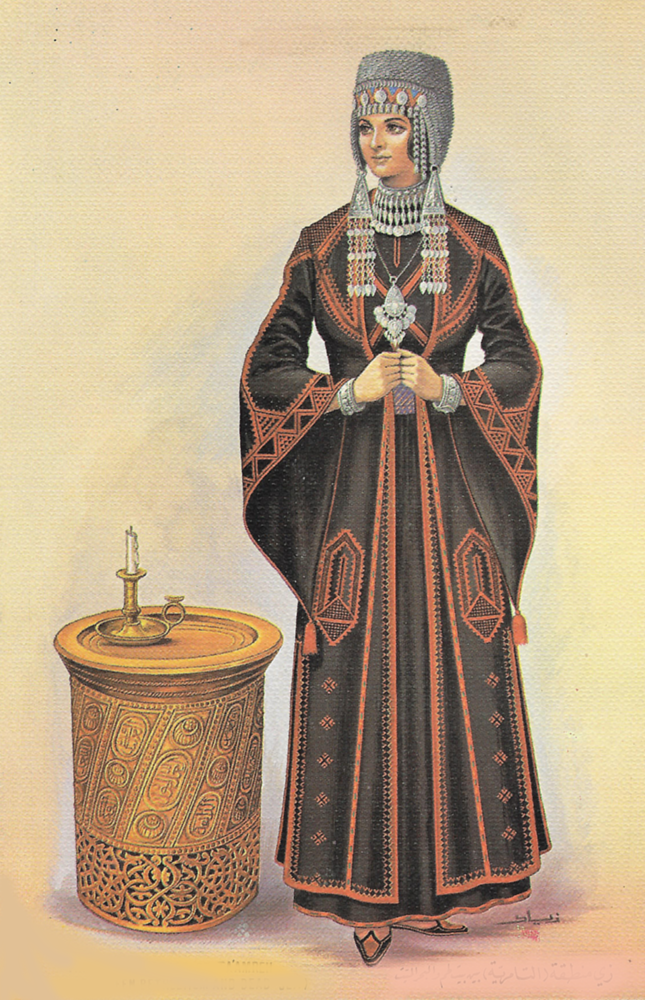This Ottoman style yelek coat, as per the Syrian artist Ziad Zokari features skirt panels split to show the under garments. The drawing is marked 'traditional dress of Ta'amreh (between Bethlehem and Dead Sea)' which was the region of Palestine in the Greater Syria of the Ottoman Empire. Pointed winged sleeves are much more common in garments from Bethlehem than in Syrian dress.
Although Syrian yeleks from the 19th and 20th century usually feature a narrow sleeve with slit wrist to show the blouse rather than this pointed sleeve, their structure and embroidery motifs are nearly identical to this example from Palestine.
An interesting influence from European fashion can be noted in the manner separate sleeves are attached to the body of the yelek. Most Syrian dresses are cut in a caftan pattern, with the sleeves being part of the bodice rather than separate pieces. In this type of yelek, the diamond shape embroidery pattern seen in most Syrian thobs is maintained, with the geometric pattern being drawn and stitched over the European inset sleeves.
|

